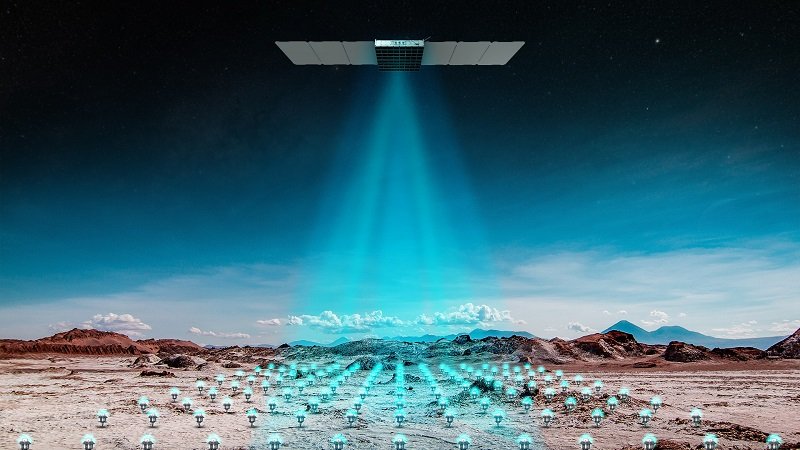DOWNLOAD THE MINING EXECUTIVE APP NOW

"Global Mining Descisions in Your Palms"
DOWNLOAD THE MINING EXECUTIVE APP NOW

"Global Mining Descisions in Your Palms"
“The world is rapidly transitioning from fossil fuels to renewable energy sources. To achieve this goal, the IMF states we need to find $13trillion (USD) worth of critical energy transition minerals. To achieve this, we must discover many more mineral deposits in increasingly more challenging settings. Fleet’s ExoSphere technology answers the urgent call to unlock the power of new exploration methods to quickly, more economically, and more sustainable look deeper beneath the surface.”
Dr Gerrit Olivier,
Director- Planetary Geophysics,
Fleet Space Technologies.
Fleet Space Technologies, one of Australia’s leading space technology companies recently appointed Dr. Gerrit Olivier as its Director of Planetary Geophysics to play a key role in its mission to unlock the power of satellite connectivity to make critical mineral exploration on earth and beyond a more sustainable and viable transition.
This is central to Fleet’s mission to further the cause of humanity by finding less impactful more cost-effective methods to find the vital energy transition minerals required to meet the global requirement to transition to net-zero.

“We are proud to unlock the power of global connectivity to answer some of our planet’s greatest challenges. Fleet’s ExoSphere earth scanning technology is already finding applications to make the search for the critical energy transition minerals more economical, faster, and much more sustainable. As explorers on this planet and beyond we must work with the very best in their respective fields. Dr. Gerrit Olivier brings an extraordinary track record in the development of Ambient Noise Tomography techniques to answer the urgent global requirement to find these critical materials while dramatically reducing impact.”
Matt Pearson,
Co-Founder,
Fleet Space Technologies.
“The world is rapidly transitioning from fossil fuels to renewable energy sources. To achieve this goal, the IMF states we need to find $13trillion (USD) worth of critical energy transition minerals. To achieve this, we must discover many more mineral deposits in increasingly more challenging settings. Fleet’s ExoSphere technology answers the urgent call to unlock the power of new exploration methods to quickly, more economically and more sustainable look deeper beneath the surface.”
Dr Gerrit Olivier,
Director- Planetary Geophysics,
Fleet Space Technologies
Dr. Olivier is a former Director and Head of Applied Geophysics at the Institute of Mine Seismology and Senior Adjunct Researcher at the Centre for Ore Deposits and Earth Sciences at the University of Tasmania. He is a pioneer of the use of ambient seismic noise-based methods for use in the mineral and materials exploration industry.
Dr. Olivier completed his MSc in Theoretical Physics at the University of Stellenbosch (South Africa) and his Ph.D. in Geophysics at the Université Grenoble Alpes (France) and is the holder of numerous awards for his work in ambient seismic tomography. The move to Fleet is a testament to a sustained commitment to expanding its use for mineral exploration.
ExoSphere
Transitioning to green energy will require enormous deposits of critical resources and Fleet is determined to use its space technology to plot more economically viable, faster and sustainable pathways to achieving this. The solution is ExoSphere, a pioneering exploration technology that delivers detailed subsurface 3D velocity mapping in as little as 4 days using an array of Geodes, Fleet’s satellite-connected seismic sensors.
The battery-operated Geodes use edge computing to analyze ambient seismic noise, which is sent by satellite for processing. The data is rapidly processed in the cloud to deliver a 3D visualization of the area and drive critical exploration decisions.
This combination of three radical technologies, ambient noise seismic tomography, low power satellite connectivity, and intelligent processing is already empowering explorers of the Earth, Moon, and Mars to access the resources needed to make a better future for humanity.
ExoSphere has just reported successful results from trials at Australia’s newest Lithium miner Core Lithium’s Finniss Project in the Northern Territory. This technology is being rolled out globally through collaboration with the world’s largest and most progressive explorers and is supporting the global effort to find more than $13trillion USD (as defined by the International Monetary Fund) value in these rare earth materials to support global sustainability goals.
Fleet’s work beyond earth: the moon, mars, and beyond
Dr. Gerrit Oliver will also work toward Fleet’s mission to unlock the power of global connectivity through its small satellite network on the moon and mars. Indeed, the ExoSphere technology will eventually be applied to rovers that will search for critical minerals as part of the moon and mars missions including the Seven Sisters program Fleet has long committed to. Dr. Gerrit Olivier is leading the team that aims to deploy a geophysical device on the dark side of the Moon by 2025 that will improve our understanding of its interior composition and formation. The team’s goal is to land tens of miniature geophysical rovers that can image the interior structure of Mars to illuminate the mineral resources that will be required for future colonization efforts. The development of these technologies is anticipated to have massive knock-on benefits for the way we explore critical minerals on Earth.
